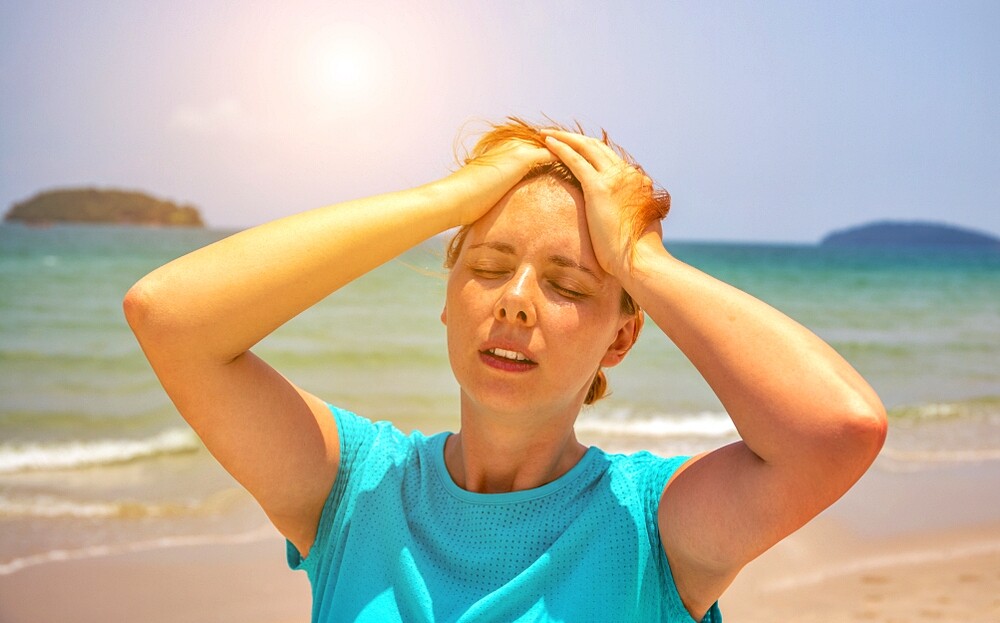There are a few things to consider when treating sunstroke. We explain which measures are useful and what else you should know about sunstroke.
What’s sunstroke?
Like heat stroke, sunstroke (insolation) is a form of heat exhaustion and is caused by long and intense exposure to the sun on the unprotected head and/or neck. The effect of the heat irritates the meninges, which can lead to symptoms such as headaches and neck pain. Often the symptoms only appear hours after exposure to the sun.
Symptoms: Caution with these signs
Typical symptoms of sunstroke are:
- Headaches
- Neck pain / stiff neck
- Overheated and reddened head and neck
- Other temperature on the body rather inconspicuous
- Nausea and / or vomiting
- Swindle
- Inner restlessness
- Disturbances of consciousness up to unconsciousness
First aid: Measures for sunstroke treatment
The very first thing to do is to get the patient out of the sun and into the shade for sunstroke treatment. However, since the symptoms usually set in later, this measure is usually unnecessary. These tips for sunstroke treatment are also suitable if signs of the disease are noticed:
- The affected person should lie in a dark and cool place with the upper body and head elevated.
- Cool compresses or cloths on the neck and head do good.
- Unless the patient suffers from vomiting or loss of consciousness, it is important to drink fluids – preferably mineral water.
- The affected person must be observed closely: If there is no improvement within 20 minutes, if he faints or if his condition worsens, an emergency doctor should be called!
In serious cases, sunstroke can cause a so-called brain edema – the brain swells and increases the pressure on the skull. Severe sunstrokes must therefore be treated by a doctor.
Two diseases: Sunstroke or heatstroke?
A heat stroke is even more dangerous than sunstroke or sunburn. Patients often suffer from increased body temperature up to a fever of over 40 degrees, which can lead to organ failure. Otherwise, the symptoms are similar to sunstroke (you can read more about this in the article Heatstroke symptoms), but they often occur while the person is still in the sun or the heat.

